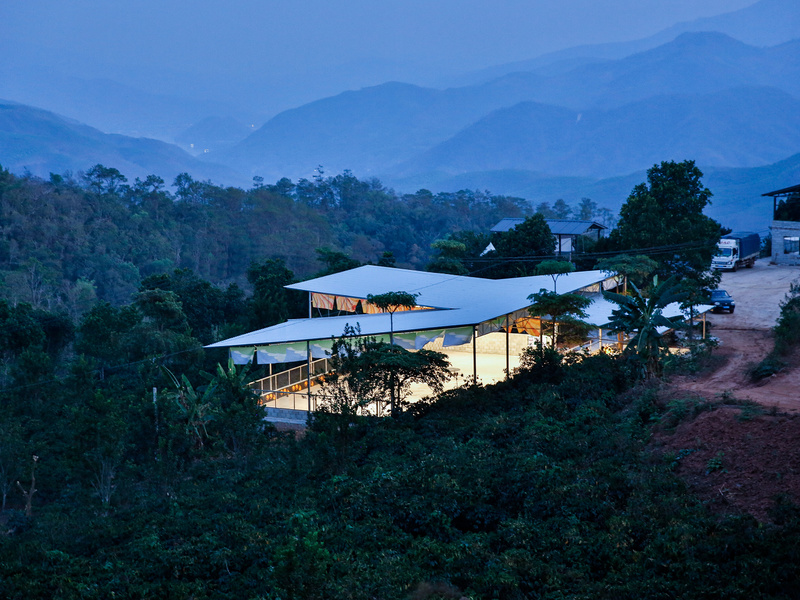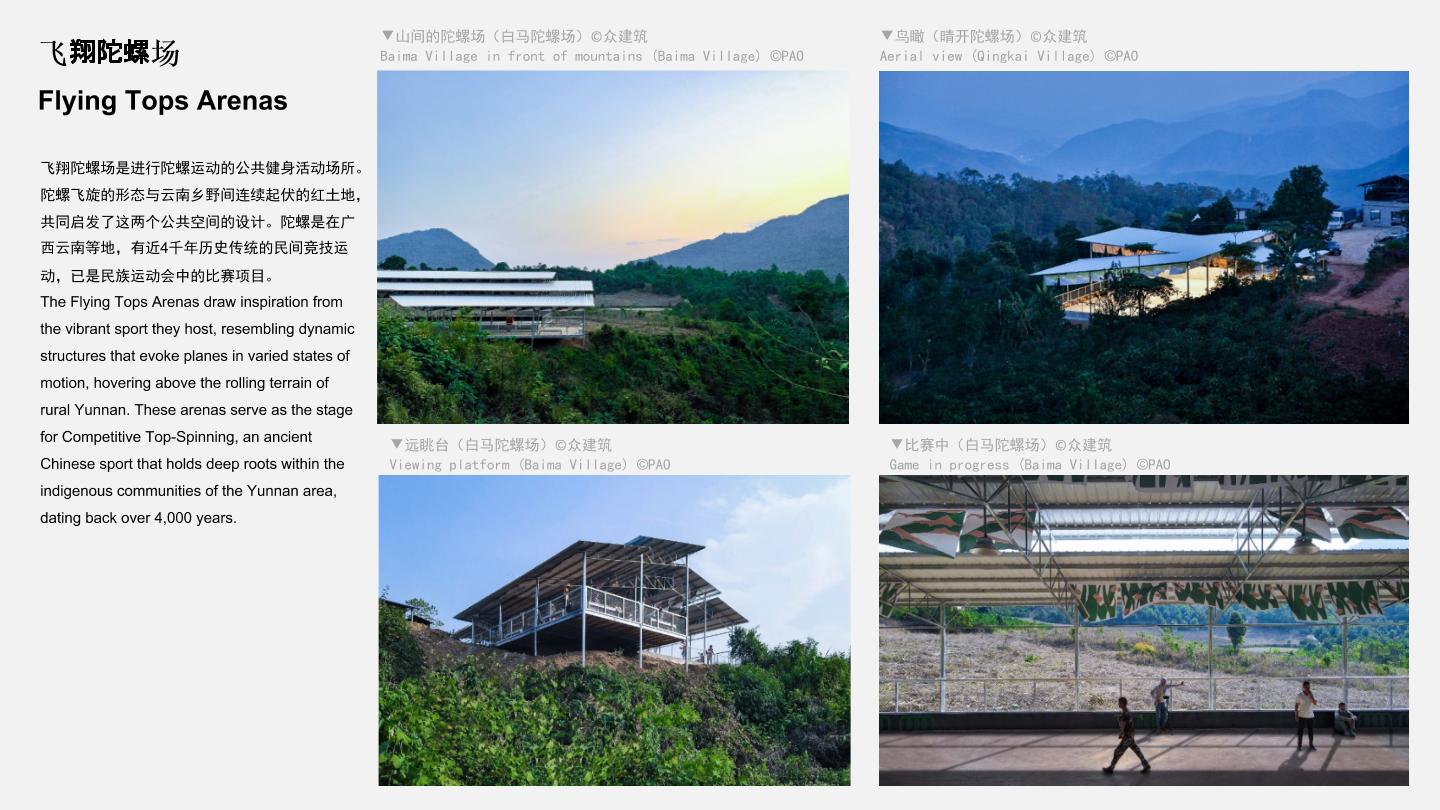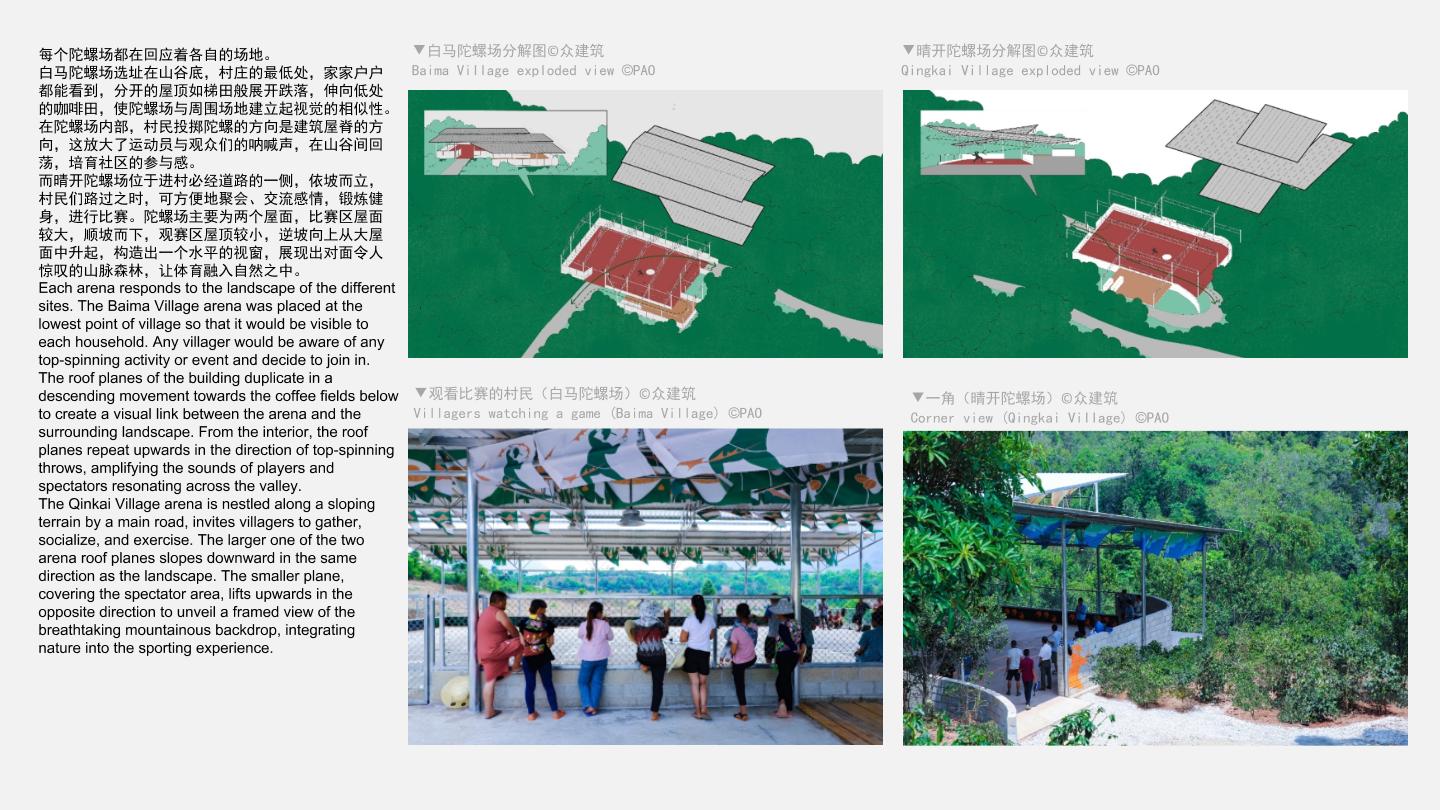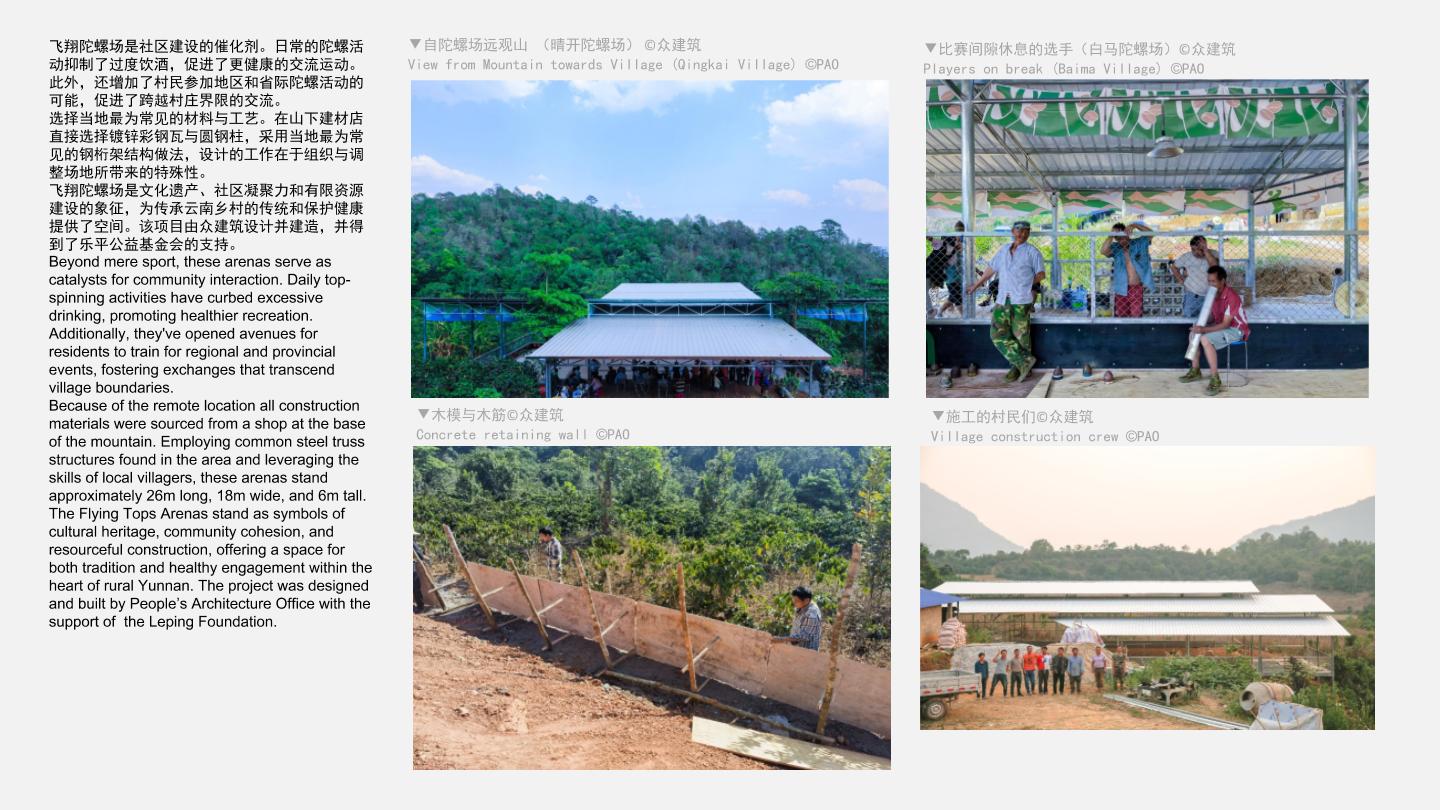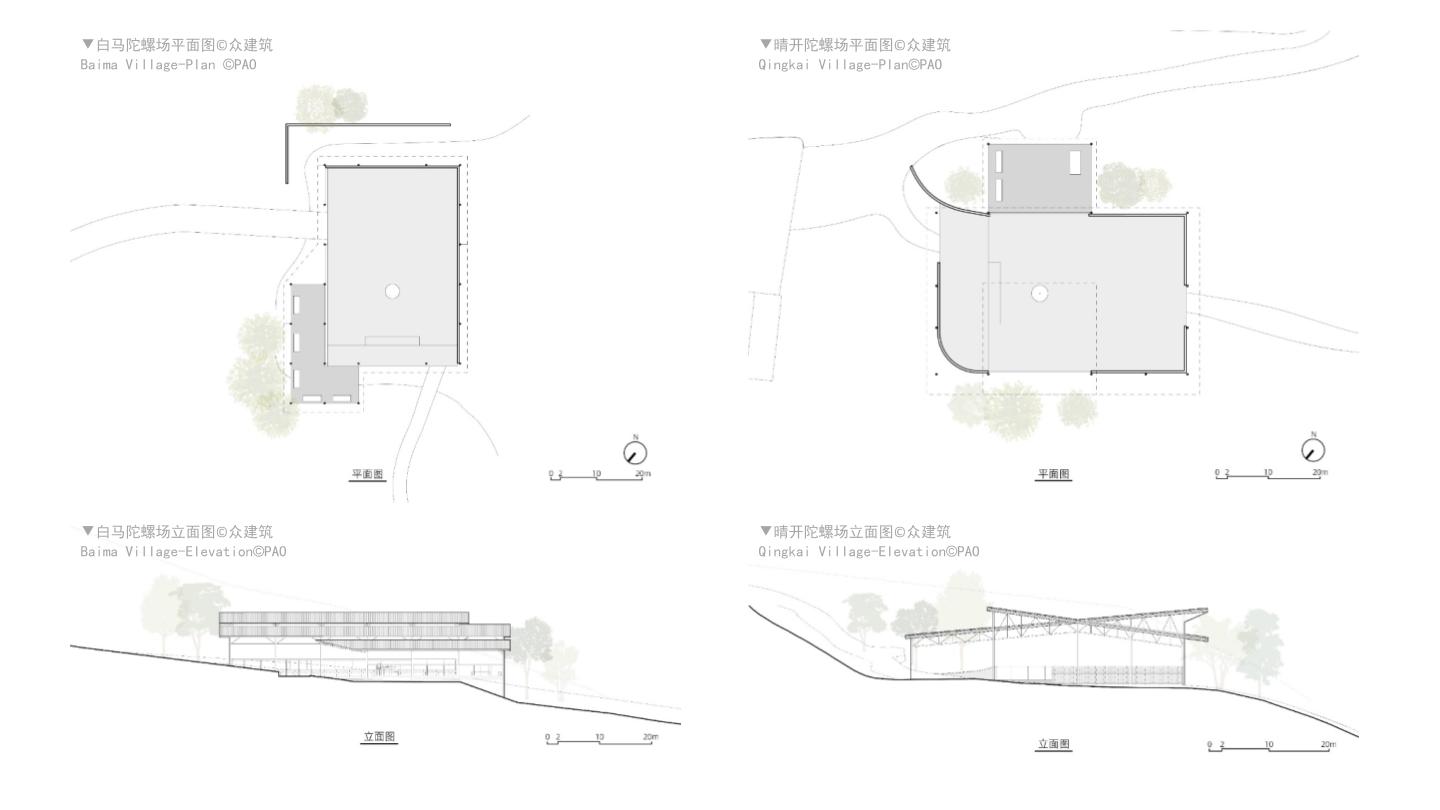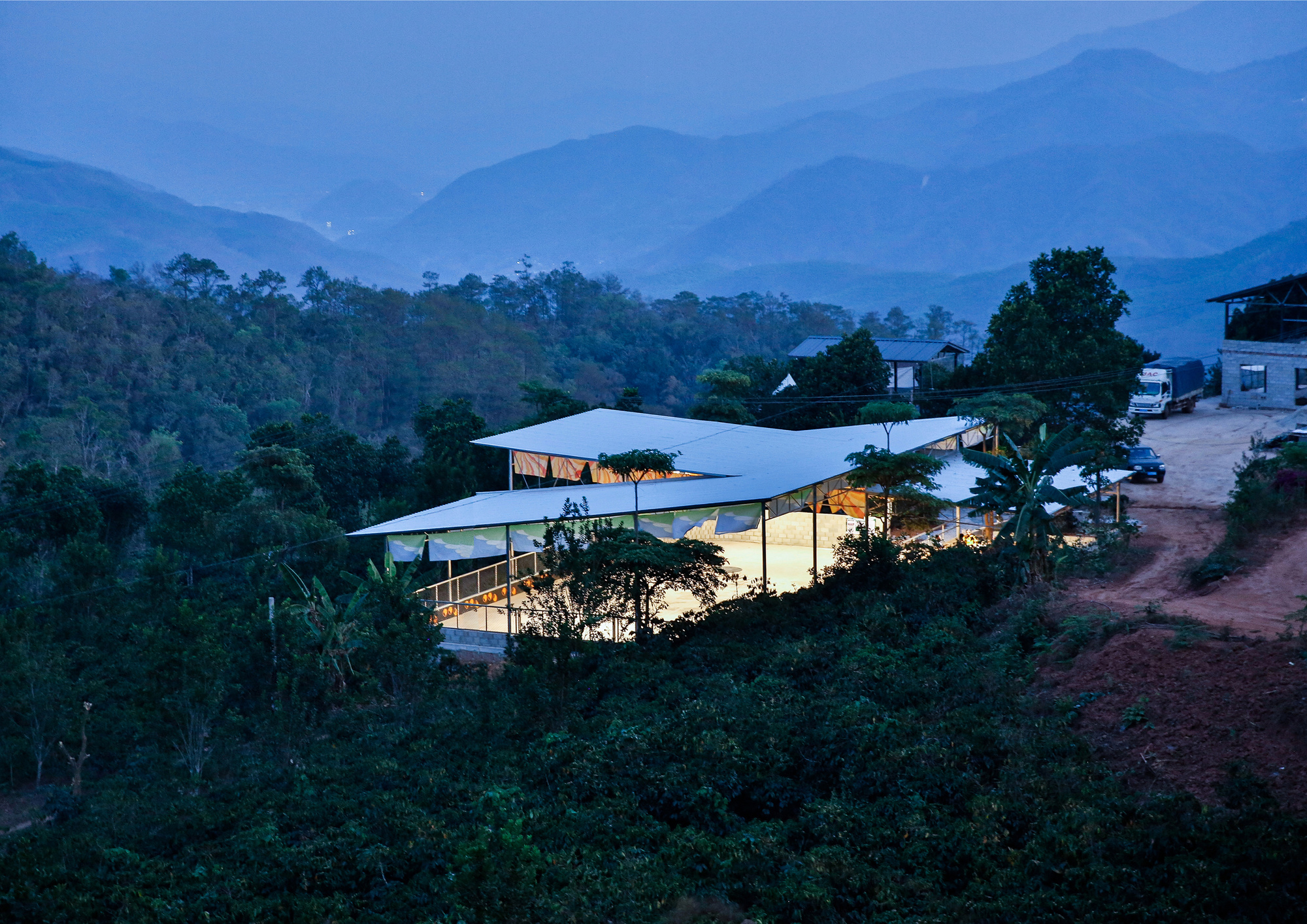
Aerial view (clear open top field) Birdview
The stagger of the roof leads the audience to look at the mountain, and also brings the architectural form of dialogue with the whole mountain. The staggered roof guides the audience's gaze towards the mountains, also bringing an architectural form that engages in dialogue with the overall mountain mass.
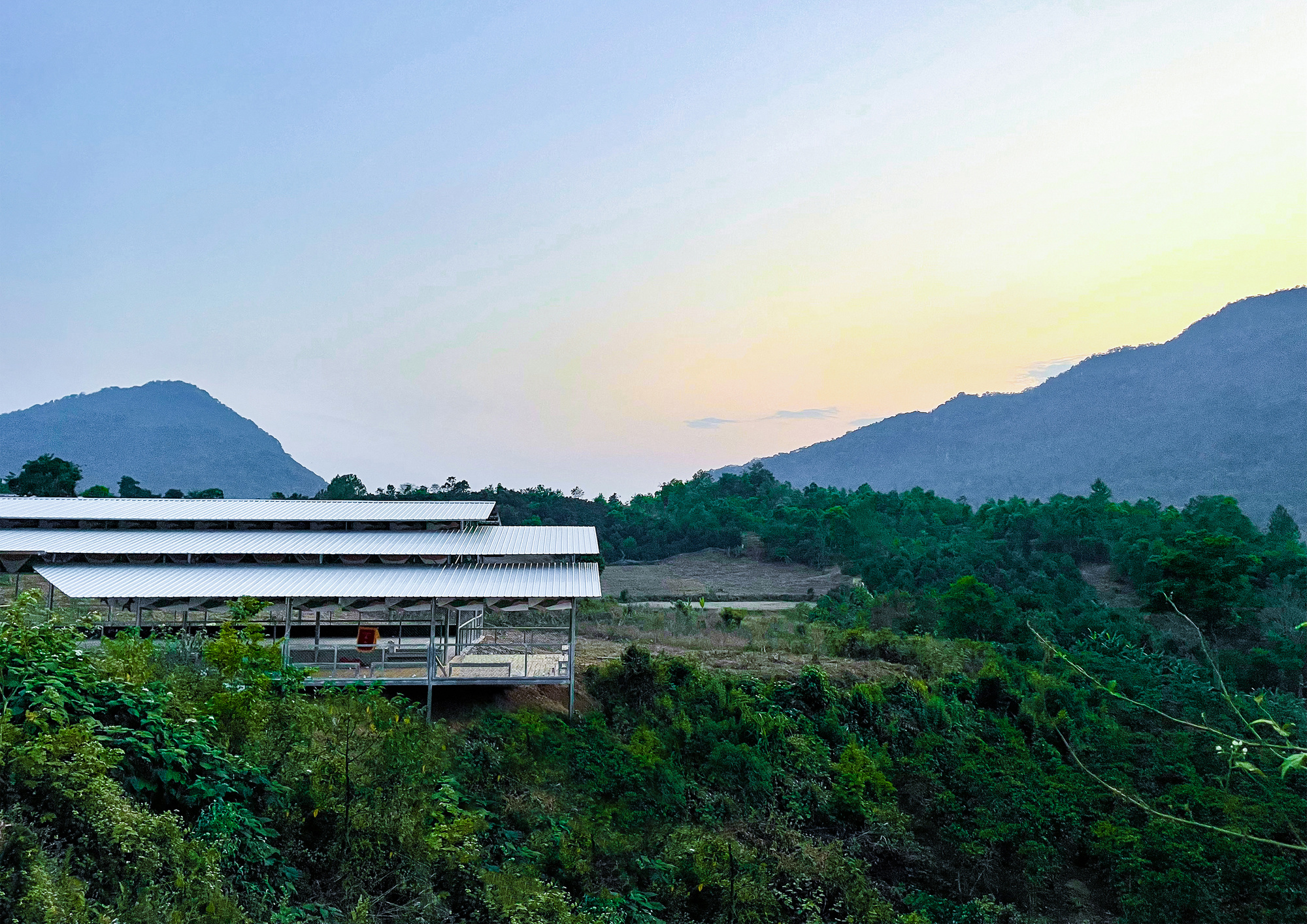
Gyroscope Field in the Mountains
Multi-level roof at the bottom of the valley, consistent with the large mountain
The multi-level horizontal roofs at the bottom of the valley are in harmony with the grand mountain terrain.
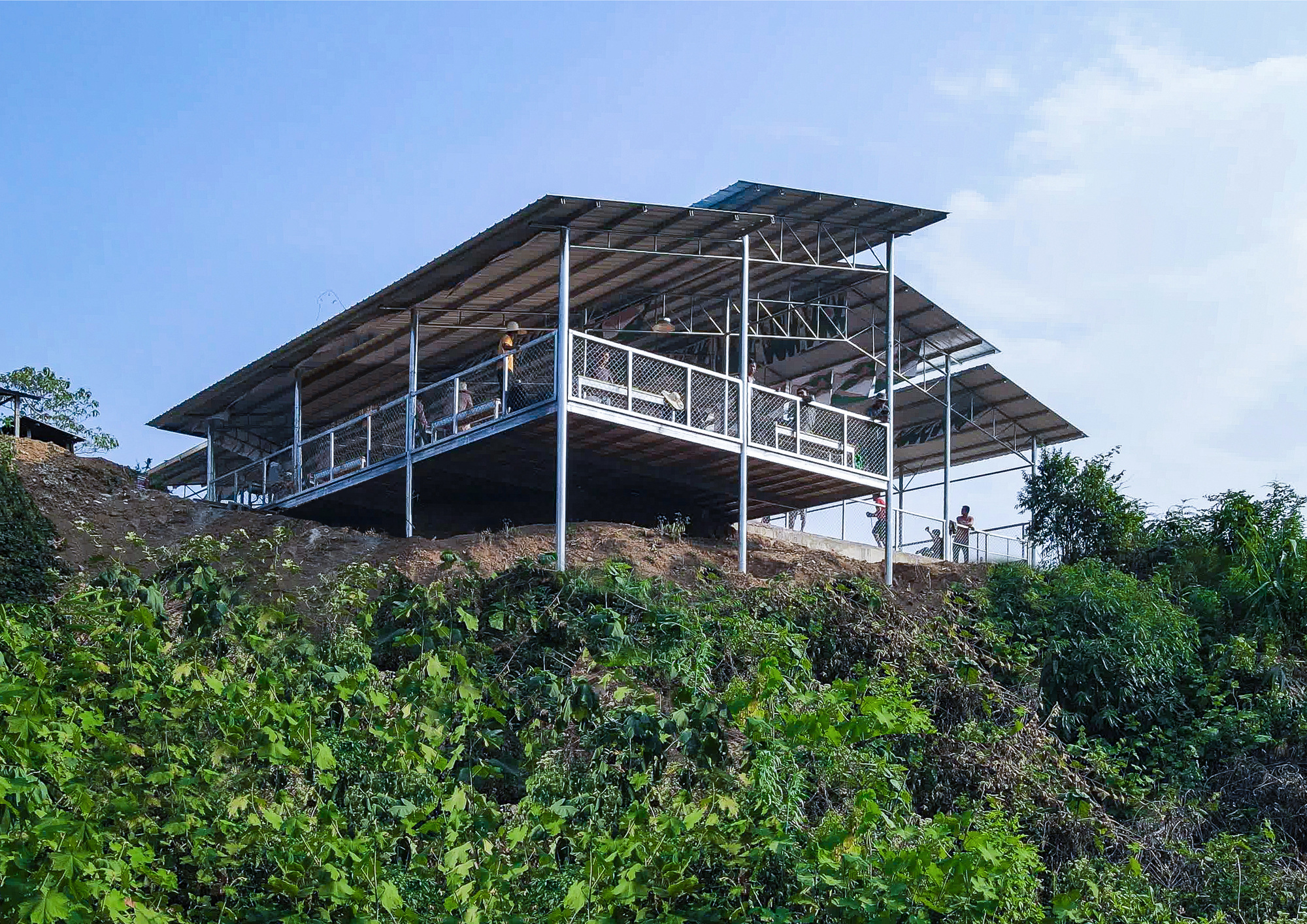
Long-View Platform
Looking up from the coffee field for spectators to rest and watch the game.
Looking up from the coffee fields to the observation area for spectators to rest and watch the event.
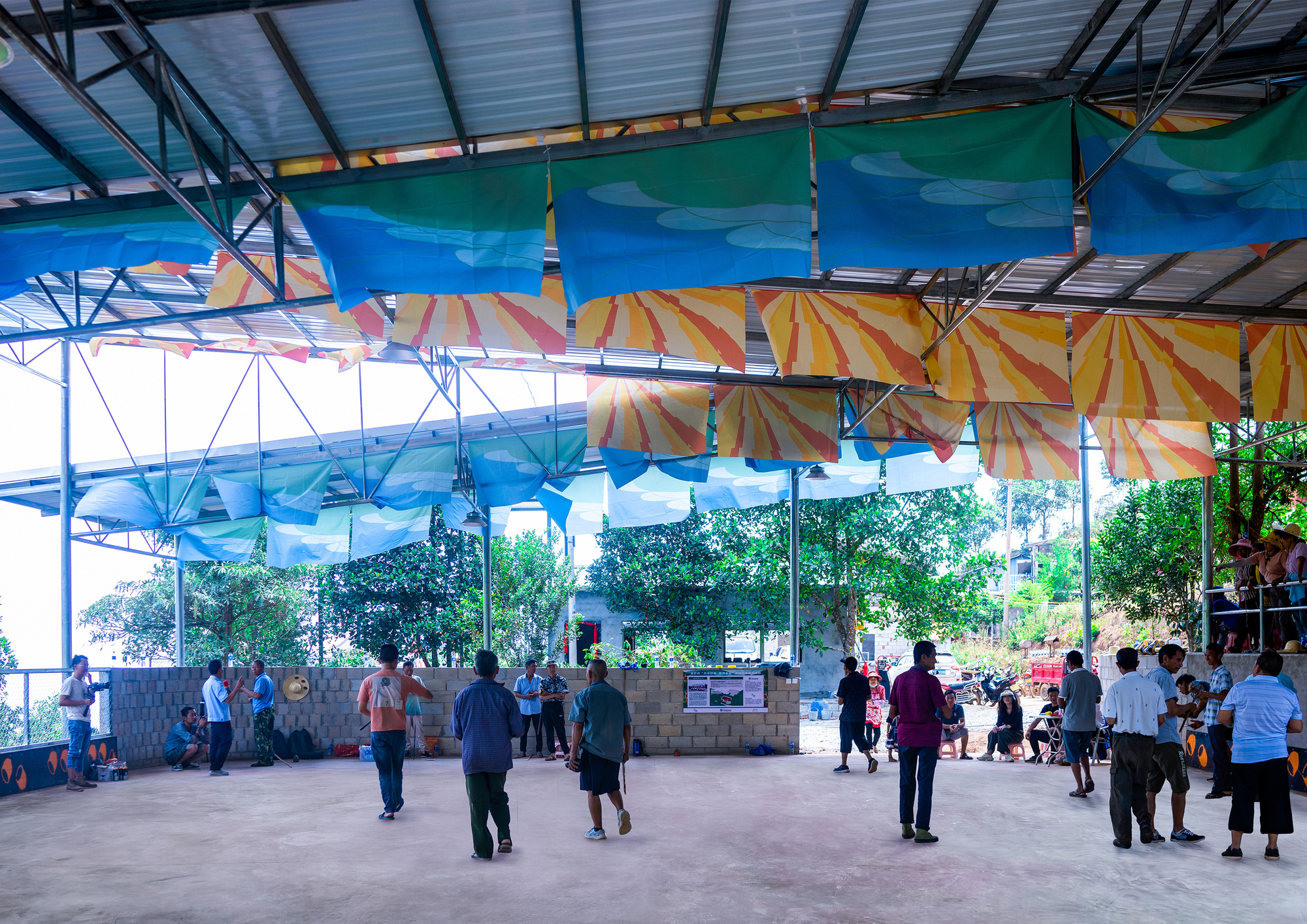
During the match 1 (clear open top field) During the competition 1
Villages' competitions are important inter-village exchanges
Village competitions are an important form of inter-village communication.

During the match 2 (clear open top field) During the competition2
Most of the people watching the game are women and children in the village, and the game is an important village community activity.
Most of the spectators at the competition are women and children from the village, and the competition is an important community activity for the villagers.
Flying Tops Arenas
The specific use of the flying gyro field is introduced in detail.
Provided a detailed introduction to the specific usage of the Flying Tops Arenas
Flying Tops Arenas
Additional additional images and descriptions Additional supplementary images and descriptions.
Each arena responds to the landscape of the different sites. The Baima Village arena was placed at the lowest point of village so that it would be visible to each household. Any villager would be aware of any top-spinning activity or event and decide to join in. The roof planes of the building duplicate in a descending movement towards the coffee fields below to create a visual link between the arena and the surrounding landscape. From the interior, the roof planes repeat upwards in the direction of top-spinning throws, amplifying the sounds of players and spectators resonating across the valley.
The Qinkai Village arena is nestled along a sloping terrain by a main road, invites villagers to gather, socialize, and exercise. The larger one of the two arena roof planes slopes downward in the same direction as the landscape. The smaller plane, covering the spectator area, lifts upwards in the opposite direction to unveil a framed view of the breathtaking mountainous backdrop.
The Flying Tops Arenas draw inspiration from the vibrant sport they host, resembling dynamic structures that evoke planes in varied states of motion, hovering above the rolling terrain of rural Yunnan. These arenas serve as the stage for Competitive Top-Spinning, an ancient Chinese sport that holds deep roots within the indigenous communities of the Yunnan area, dating back over 4,000 years.
Beyond mere sport, these arenas serve as catalysts for community interaction. Daily top-spinning activities have curbed excessive drinking, promoting healthier recreation. Additionally, they've opened avenues for residents to train for regional and provincial events, fostering exchanges that transcend village boundaries.
The Flying Tops Arenas stand as symbols of cultural heritage, community cohesion, and resourceful construction, offering a space for both tradition and healthy engagement within the heart of rural Yunnan.
People's Architecture Office (PAO) is a multi-disciplinary studio focused on social impact through design particularly in the areas of housing, urban regeneration, and education.







